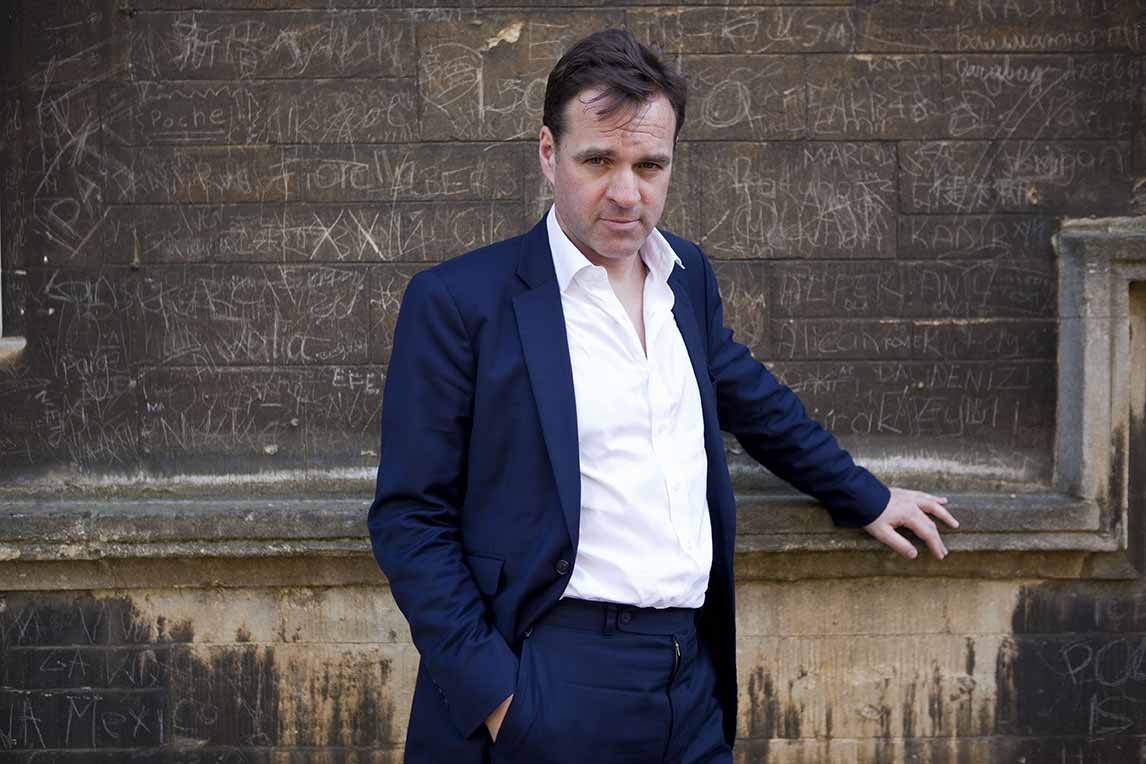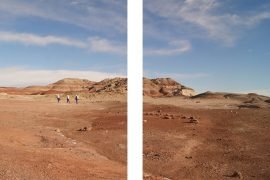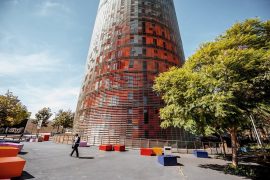[dropcap letter=”O”]
ne of the great virtues of historian Niall Ferguson (Glasgow, 1964) is his expository clarity. His history books, always well structured, have the real virtue of always relating to the present. The author subscribes to Churchill’s maxim: The longer you can look back, the farther you can look forward.
For years now, Ferguson has been embroiled in the ambitious undertaking of writing a biography on the complex figure of Henry Kissinger. It is an authorized biography, with access to Kissinger’s own private papers, of which the first volume has already been published.
His latest book, The Square and The Tower, deals with the interaction of the horizontal power of networks, the square, with the vertical power of hierarchies, the tower, throughout history. It is part of his research to soundly approach the second volume of his biography where, as the author himself emphasizes, the theory of networks and how they interact with vertical powers is key to explaining the success and development of Kissinger as a political actor.
Why are networks important in the study of history?
Some time ago I reviewed some work by young historians whose analysis included social networks, improving our understanding of an important variety of subjects, from the Reformation, for example, to the Enlightenment. My impression is that these methods have not yet been fully adopted and used more generally in the study of basically any subject in the past worthy of attention.
I myself wondered how Network Theory could help us improve our analysis of the Bolshevik revolution or the rise of Hitler, to give but two examples. In this sense, the book [The Square and The Tower] had two main objectives: on the one hand, to point out the importance for History of a rigorous approach to network theory, and at the same time, to demonstrate to the people in Silicon Valley, for whom in some cases history begins with Google’s IPO, that History also applies to them.
Kissinger’s success after 1968, when he began his political career, rested on his ability to build a very effective, dense network of contacts and complicities.
In this latest book, you address certain topics which you have already written about in the past. I am referring to the Rothschilds or the figure of Kissinger for example. How does this approach through the Networks improve our historical understanding?
While writing this book I realized I had been writing about networks throughout my career, even if it was not really formally. As I was finishing the first volume of the Kissinger biography, an idea came to me: this was the idea that Kissinger’s success after 1968, when he began his political career, rested on his ability to build a very effective, dense network of contacts and complicities.
This made me realize I did not have enough knowledge of how network systems function to address this issue rigorously. The Square and The Tower is to a certain extent a book written as part of this preliminary research, and to build up certain theoretical tools that I needed prior to the exercise of writing the second Kissinger volume. That is why the book includes network analysis around the key figure of Kissinger, as well as other key elements that help understand the crisis faced by the powerful nation-states in the 60s and 70s and that constitutes the backdrop from which Kissinger would have to develop the bulk of his political career.
In many ways, the concept of networks is closely related to that of markets, but the book makes it clear that this is not quite so. How are networks and markets different?
Many economists are tempted to consider the market a social network, so they talk indistinctly of networks and what we associate with the idea of a free market. However, this is not quite so. For example, when we talk about the Illuminati or the Freemasons, they have absolutely nothing to do with free markets. The Islamic State is another perfect example of a network in which the economy plays an absolutely subordinate role. Networks can be there to exchange information, ideas, or may even be designed to distort market mechanisms. The market is a particular type of network, probably one of the most sophisticated, but there are many other kinds of network whose dynamics do not depend on prices. To confound the networks with the markets is a fundamental error, and means not understanding the basic premise of the book. Adam Smith realized that what we call networks today transcends the market mechanism when in The Wealth of Nations he says: “People of the same trade seldom meet together, even for merriment and diversion, but the conversation ends in a conspiracy against the public, or in some contrivance to raise prices.“
The Square and The Tower is a highly multidisciplinary book. Among the many references, you cite Nassim Taleb’s Antifragile. How does this idea of antifragility relate to hierarchical power and networks?
I have studied the works of Nassim, a good friend, in depth and although we have very different academic backgrounds, we have both been making similar cases in different fields. One of the important things that Nassim’s books have taught me is that a large part of what happens in the world has to do with complexity and the tendency of humans to create planned, fragile orders. In other words, the social institutions created by humans seem ideal in 99% of the cases, but when we set ourselves within that remaining 1%, they collapse irremediably. To a certain extent, both books [Antifragile and The Square and The Tower] can be read as complements to each other: my book offers a historical perspective of how humans have from time to time succeeded in building robust, resilient structures throughout history. In fact, history, the passage of time, is the great judge concerning what is fragile and what isn’t.
Without Twitter or Facebook, the election of Trump for President would be unthinkable. Social networks gave Trump a very effective communication tool without having to rely on the huge resources that a traditional election campaign would require
Consider the Catholic Church for example, an institution perfectly designed to be antifragile: the Protestant Reformation was a decidedly disruptive element that altered but did not destroy it, and it is today still in relatively good health after almost 2,000 years of history behind it. It is an example of a solid, resistant institution that unites elements that have to do with hierarchical power, with the Pope at the very top, but with elements of network power if we consider the decentralized network structure of the different parishes.
Eric Schmidt nailed it when he talked about the book: “Silicon Valley needed a history lesson and Ferguson has provided it.” Although there is a continuum between yesteryear and today, what are the most important differences between Gutenberg’s world and Zuckerberg’s?
In the book I explain the story of Johannes Gutenberg, the inventor of what is probably the most important artefact to explain the modern world and who, notwithstanding, had rather little success as an entrepreneur. In fact, he ended his days in bankruptcy. So one thing we can say for sure, Mark Zuckerberg‘s business model is much sounder than Gutenberg’s. The difference, I think, is that in Gutenberg’s case we are facing a true decentralized revolution, a true network. Shortly after the invention of the printing press, it spread throughout Europe—among other cities, to Barcelona—not the Ottoman Empire, where each press was operated by an independent publisher, and therefore without any central control. This process transformed religious life, and culture in general, and became the basis of the Scientific Revolution and the Enlightenment.
In the present, it’s a different story. Although we all have out own personal computers and can freely connect to the Internet—a truly decentralized network—we can’t say the same of most platforms through which we surf the web: we do not interact in the same way on Facebook as when someone read a pamphlet in the 1600s. Centuries passed before the publishing business started making money with advertising, while it took very little time for this to happen with the modern social networks.
We are seeing how initially horizontal movements like Facebook quickly become hierarchical
The book is not only about the Square and the Tower, but above all about how both dynamics interact through history. This relationship between networks and hierarchical powers is not a dichotomy, but rather a continuum. Networks, like complex systems, can vary very rapidly in a transitory phase to the point where they become hierarchical structures. This is the case of social networks: the image of a horizontal, flat world, generated by social networks in their infancy was an illusion that has faded over time. Lászó Barabási emphasizes how social networks are not free of scale, that is, not all the nodes in the network are equal. When we open an account on Twitter, for example, we do not follow random nodes, we follow those accounts that have most followers. We join the most connected node, we all end up following Donald Trump, which favours hierarchical structures being replicated within the network.
To what extent were social networks key for Donald Trump’s victory in the 2016 election campaign?
Let me put it this way: without Twitter or Facebook, the election of Trump for President would be unthinkable. Social networks gave Trump a very effective communication tool without having to rely on the huge resources that a traditional election campaign would require. Before 2008, the key element in the elections was television, a very expensive channel, and the power of the party apparatus. If you look at the figures you’ll see that Hillary Clinton‘s campaign budget was twice Trump’s. Without Twitter and Facebook Trump would never have won in the key states that ultimately determined his election. In addition, there were interactions with other networks that Trump knew how to get the most out of. The Islamic State became involved with the escalating violence during the months leading up to the elections, which helped polarize voters on the issue of Islam and immigration; and the Russians also got involved with their intelligence network hacking the Democratic and Republican party servers. We can say without doubt that it was an election where the power of the networks was key. Imagine the same two candidates, for example, in the 2004 elections, and it is easy to conclude that Trump wouldn’t even have passed the filter of the Republican nomination, where the hierarchical powers of the party had key influence.



















